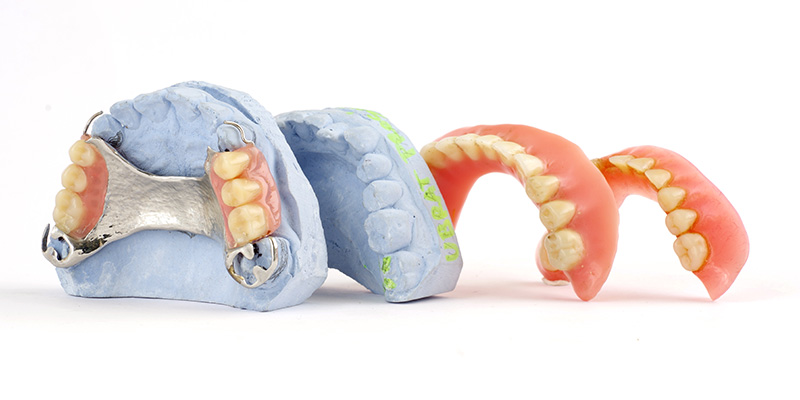
A lot of people are using dental prostheses in our country and around the world. The number of patients using complete or partial dentures grow every day. These kinds of removable prostheses help gain back the esthetic look as well as facilitate function (chewing) and phonation (speech). Dental prostheses are much more easily adjustable prostheses as opposed to other types of prostheses in the body. Despite being seen as the most tissue-compatible prostheses regarding esthetics and function, an adjustment period for the cheeks, lips, temporomandibular joint, tongue and the brain is needed after prostheses are manufactured. During this period, issues are easily handled by cooperating with your dentist.
Partial and Complete Removable Prostheses (Dentures)
Removable dentures are being applied for many years in order to battle edentulism caused by wholesome or partial teeth loss. These kinds of prostheses are supported by both teeth and the edentulous areas. The stability of these dentures varies according to the supporting teeth and tissue. Complete dentures can't get support from the teeth due to edentulism. While complete denture is withstanding gravity thanks to the vaccuum effect, the mobility of tongue, cheek and lip muscles negatively affect the stability of prostheses. Mandibular dentures will become less mobile in the mouth by the adjustment of muscles to the prostheses in time and increase in muscle tone. If removable denture treatment is chosen in the case of partially missing teeth, support is gained from the teeth by utilizing crochets and sensitive retainers for gaining more stable dentures. The most important advantages of these prostheses are their price and short manufacturing times. Their disadvantages are tooth decay due to supporting teeth erosion by the crochets, supporting tissue destruction due to excessive force on the teeth, jawbone osteolysis due to insufficient amount of applied force to the jawbone and the requirement of removing the dentures overnight.

 Türkçe
Türkçe English
English Français
Français русский
русский Español
Español